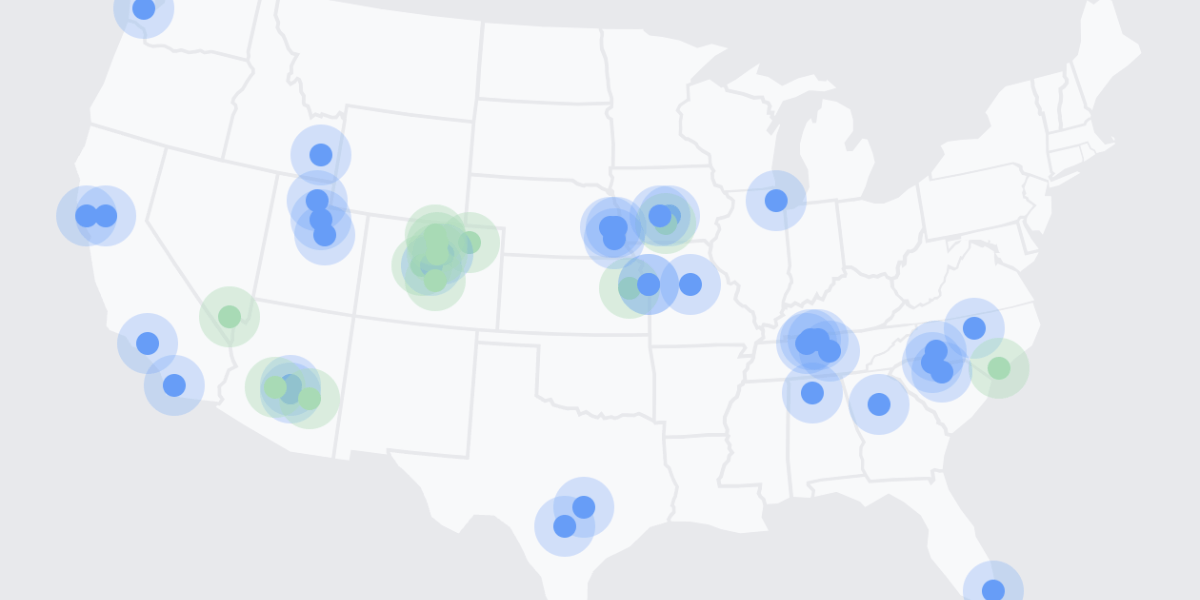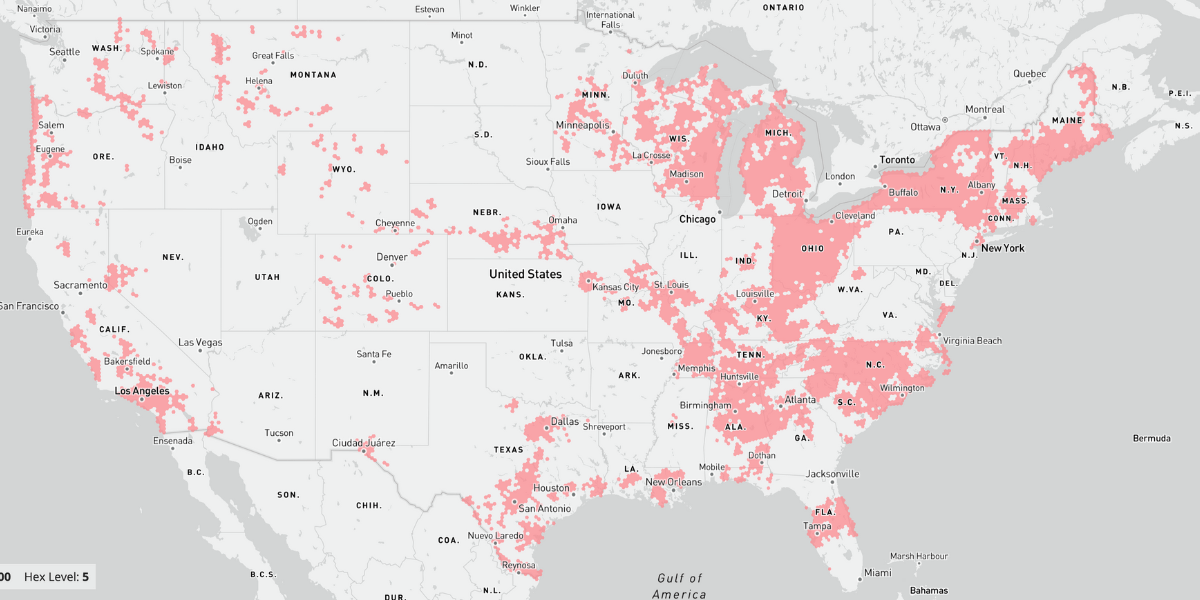Lower your internet bill
61% of people overpay for their internet.
Are you one of them?
Unlock exclusive offers in your area!
Call now
[tel]Enter zip code
1 Star is Poor & 5 Stars is Excellent.
* Required

Written by Caroline Lefelhoc - Pub. Nov 21, 2025 / Updated Oct 21, 2025
Table of Contents
Are you happy with your Internet service?

About the author
Shopping for internet service often feels like comparing apples to oranges. Today, we’re comparing two top contenders in America: Google Fiber vs Spectrum. One is fiber, one is cable. Google Fiber promises unmatched speeds, while Spectrum blankets most of the country with cable you can count on. Both providers have their strengths, but which one deserves to take your monthly payment?
Below is a breakdown of the key differences between Google Fiber and Spectrum to help you make the best choice.
61% of people overpay for their internet.
Are you one of them?
Unlock exclusive offers in your area!
Call now
[tel]Enter zip code
Spectrum takes a different approach. The cable provider offers three tiers: 100Mbps, 500Mbps, and 1,000Mbps for downloads [2]. With cable, you don’t receive symmetrical upload and download speeds. Even on Spectrum’s gigabit plan, uploads max out at a tiny portion of Google Fiber’s capability.
This gap matters depending on how you use your internet. If you’re shopping for internet for your elderly parent who just wants to check their email and watch Netflix, this likely won’t affect them. However, remote workers uploading presentations, content creators sharing videos, podcast hosts uploading new episodes, and gamers streaming on Twitch all depend on upload speeds. Google Fiber offers a better experience for these activities.
Cable internet also has a tendency to slow down during peak hours when your neighbors flood the network (we’re talking that 7 pm – 11 pm time frame). Fiber connections, on the other hand, pump out consistent speeds regardless of neighborhood usage patterns.
Google Fiber keeps pricing straightforward. Plans cost $70 for 1 Gig, $100 for 3 Gigs, or $150 for 8 Gigs per month. These prices don’t jump after a promotional period—what you see is what you pay, year after year. This is great, because many providers will raise your price after the promotional period ends.
Spectrum lures customers with lower initial rates. The 100Mbps plan starts at $30 monthly, the 500Mbps tier runs $50, and gigabit service costs $70. Sounds competitive, right? Here’s the catch: after 12 months, those prices spike by $20 to $30. That means Spectrum’s gigabit plan eventually costs $100 monthly—$30 more than Google Fiber’s comparable service (and remember, Spectrum won’t give you the symmetrical speeds of Google Fiber).
Let’s talk about hidden fees. Google Fiber includes equipment at no extra charge. Spectrum throws in a free modem but charges $10 monthly for a router on most plans (except the gigabit tier) [3]. Over two years, that router rental adds $240 to your bill.
Neither provider requires contracts or charges early termination fees. Both offer unlimited data with no caps—a major plus since many cable providers throttle heavy users.

Google coverage

Spectrum coverage
Spectrum reaches approximately 57 million homes across 41 states. Only nine states lack Spectrum coverage entirely. If you live anywhere near a mid-sized city or suburb, Spectrum likely services your area.
Google Fiber operates in just 19 states, covering slightly more than 1% of U.S. households. Major metro areas like Kansas City, Huntsville, Atlanta, Charlotte, Austin, and Salt Lake City have good Google Fiber coverage. However, Google Fiber remains unavailable to most Americans. The company is expanding into new markets, including Las Vegas and the suburbs around Denver and Charlotte. But fiber buildouts take years, so don’t expect Google Fiber to reach rural areas anytime soon.
Spectrum struggles in rural regions as well. Cable infrastructure costs make low-density areas unprofitable. If you live outside city limits, satellite or fixed wireless are likely your only options.
Most households don’t exceed 564Mbps in actual usage, according to OpenVault data [4]. That means Spectrum’s 500Mbps plan handles typical family needs just fine. Google Fiber’s 1-gig baseline might be overkill for casual users.
Power users, large families, and tech enthusiasts will appreciate Google Fiber’s higher tiers. The 3-gig and 8-gig plans support dozens of connected devices without breaking a sweat.
Smart shoppers look beyond sticker prices to the cost per megabit per second. This metric reveals which plans deliver the best bang for your buck.
Google Fiber’s 1-gig plan costs 7 cents per Mbps ($70 divided by 1,000Mbps). The 3-gig plan drops to just 3 cents per Mbps. These rates are incredible and beat most competitors.
Spectrum’s base plan costs 30 cents per Mbps after the first year—add the router fee, and it climbs to 50 cents. The 500Mbps plan costs 16 cents per Mbps initially, increasing to 18 cents after 12 months (including the router). Only the gigabit plan approaches Google Fiber’s value at 10 cents per Mbps.
So, if you’re comparing cost per megabit, Google Fiber beats Spectrum out easily.
Google Fiber consistently ranks among the top providers in customer satisfaction surveys. The American Customer Satisfaction Index gave Google Fiber a score of 76 out of 100 in 2025—tying for second place among all fiber providers [5]. J.D. Power ranked Google Fiber first in the South region for the third consecutive year [6].
Spectrum shows improvement but lags behind. ACSI awarded Spectrum 71 points in 2025, up from previous years but still below the industry average [5]. J.D. Power placed Spectrum behind Cox, Google Fiber, AT&T, Frontier, and Xfinity in most regions. Spectrum ranked third in the West Region [7].
Customer complaints often focus on Spectrum’s price increases and inconsistent speeds during peak hours. Google Fiber users praise reliable performance and transparent billing.
Google Fiber includes a Wi-Fi 6E router with all plans. Multi-gig tiers (3-gig and above) come with mesh access points covering up to 5,000 square feet. Need more coverage? Additional mesh points cost $100 each [1].
Spectrum provides a free modem but charges for routers on lower-tier plans. You can skip this fee by purchasing your own compatible equipment, but you won’t receive technical support if issues arise.
Installation costs vary. Google Fiber typically handles setup as part of service activation. Spectrum charges $65 for professional installation, $30 for a self-install kit, $30 for activation, and $10 for Wi-Fi setup.
Google Fiber’s 8-gig plan includes a 25% refund if your internet goes down for more than 45 minutes. Higher-tier plans offer internet backup that keeps you connected for up to two hours during outages.
Spectrum grants customers free access to 530,000 Wi-Fi hotspots nationwide. Connect using your account credentials whenever you’re in range. The My Spectrum app makes finding and joining hotspots effortless.
Choose Spectrum if:
Google Fiber delivers superior performance and better long-term value. The fiber technology outpaces cable on reliability, speed consistency, and upload capacity. If you can get Google Fiber at your address, it’s usually the smarter choice.
Spectrum serves as a solid backup option when fiber isn’t available. The cable provider offers respectable speeds and wide availability, though price increases and limited upload speeds diminish the appeal.
Ready to sign up? The providers available at your address determine your actual options. Enter your zip code below to see which internet services reach your home, compare real pricing, and find exclusive deals.
61% of people overpay for their internet.
Are you one of them?
Unlock exclusive offers in your area!
Call now
[tel]Enter zip code
Is Google Fiber faster than Spectrum?
Yes, Google Fiber offers faster speeds overall. All Google Fiber plans start at 1,000Mbps with symmetrical upload and download speeds. Spectrum’s fastest plan reaches 1,000Mbps for downloads but only 35Mbps for uploads. Google Fiber also maintains more consistent speeds during peak usage times since fiber technology handles network congestion better than cable.
Why does Spectrum’s price increase after one year?
Spectrum uses promotional pricing to attract new customers. After 12 months, rates jump by $20-$30 per month across all plans. This pricing strategy is common among cable providers.
Can I get Google Fiber in my area?
Google Fiber currently serves 19 states with availability in major metro areas like Kansas City, Atlanta, Austin, Charlotte, and Salt Lake City. The provider reaches just over 1% of U.S. households. Enter your address here or call 1-833-933-2468 to see if service is available at your location.
[1] Fiber.google.com
[3] Cabletv.com. “Spectrum Internet".
[4] Openvault.com. “Resources"
[5] Theacsi.org. “Internet Service Providers"
[6] Fiber.google.com. “Three Peat GFiber is 1 Internet in J.D."
[7] Jdpower.com. “2025 US Residential Internet Service Provider Satisfaction Study"

About the author
Congratulations, you qualify for deals on internet plans.
Speak with our specialists to access all local discounts and limited time offers in your area.
[tel]61% of people overpay for their internet.
Are you one of them?
Unlock exclusive offers in your area!
Call now
[tel]Enter zip code